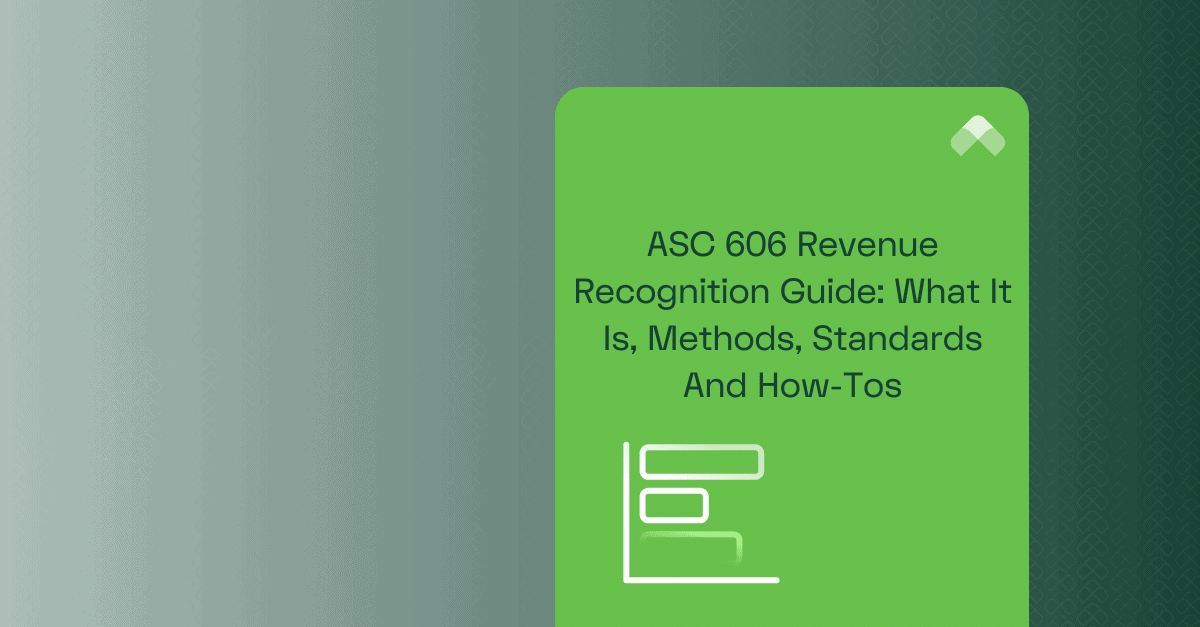If you deal with your company’s accounting, you likely know that explaining revenue recognition is like trying to catch smoke with your hands. When does income go from a number on a contract to revenue in the books?
Answering that question is often dependent on the revenue recognition method your company adopts as per its revenue policies. Revenue policies help to determine when performance obligations are met and revenue should be recognized. Although there are several different revenue recognition methods, we’ll explore the completed contract method in more detail throughout this blog.
The completed contract method (CCM) sidesteps much of this by simply waiting to report everything at once until the project is complete. While this sounds simple, CCM brings its own set of revenue recognition considerations per relevant tax laws.
So, how does CCM work in real-world scenarios? And is it the right choice for your revenue recognition operations?
What Is the Completed Contract Method?
In a nutshell, CCM only recognizes revenue and related expenses once a contract is fully completed.
Unlike other methods (such as percentage of completion) where revenue is recognized over time, completed contract methods defer all revenue and expense recognition until the final performance obligation is fulfilled.
This model is beneficial in scenarios where:
- It’s difficult to estimate the stages of completion
- The contract duration is relatively short
- Contract deliverables are subject to change
CCM is common for construction companies, as certain projects immediately qualify to use CCM versus percentage of completion (PCM) by IRS standards. That said, any (qualifying) contracts involving multiple deliverables or unpredictable timelines can benefit from this accounting method.
For instance, software development companies may not be able to determine a clear timeline or project scope. Rather than deal with ongoing, incremental reporting complexities, they may opt for CCM and recognize revenue simultaneously.
Key Characteristics of the Completed Contract Method
As noted, CCM is just one of many methods for financial reporting. The biggest differences tend to be concentrated in two areas:
- Revenue recognition: Revenue is only recognized once the entire contract is completed. This means that until the project is finished, no revenue is reported—even if the company has incurred substantial costs due to the project.
- Financial statement impact: Costs incurred are recorded as work-in-progress and essentially treated as assets until project completion. Once complete, revenue and expenses are recognized simultaneously.
From an accounting entry perspective, CCM follows a straightforward procedure. Revenue is credited, and the corresponding expenses are debited, resulting in the full recognition of both at the same time.
This approach streamlines revenue recognition compared to other methods, such as the percentage of completion method, which recognizes revenue and expenses in proportion to project progress.
How the Completed Contract Method Works
While CCM can be a powerful strategy, it also requires careful execution to ensure compliance and extract maximum value.
Here’s how it works in practice:
- Setup and cost recording: All project-related expenses must be carefully recorded as WIP on the balance sheet.
- Ongoing management: Costs are added to the WIP account as the project progresses. No revenue is recognized, so your statements show rising assets without corresponding income.
- Completion: The contract value is recognized as revenue once the client accepts all deliverables. All WIP costs are expensed and matched against this revenue.
- Final entries: Accounting entries credit the revenue account and debit accounts receivable (or cash) for the contract value. The WIP account is credited, clearing the balance sheet, with corresponding expenses debited to the income statement.
Note that CCM can lead to fluctuations in financial performance, particularly if multiple contracts are completed in the same period.
Example 1 of the Completed Contract Method
Consider a construction company working on a straightforward residential housing project:
- The project is expected to take six months to complete
- The company has agreed on a fixed contract price of $1 million
- Estimated costs equal $800,000, leaving room for $200,000 in profit
This scenario, common to the construction industry and others, is ideal for CCM since it has a short completion time and predictable costs. Rather than tally expenditures as they accrue, the company can add everything together at the end for a streamlined revenue recognition process.
Example 2 of the Completed Contract Method
Alternatively, consider a software development company tasked with overhauling a client’s tech stack with custom, integrated solutions with a project completion period of less than six months:
- The estimated project timeline is short and manageable
- The company sets an initial valuation of $1.5 million
- Minus expenses, estimated profit equals $300,000
In this scenario, the CCM can be justified. Since the project is expected to be completed quickly, CCM simplifies financial reporting by recognizing revenue only upon completion.
However, it is important to note that CCM is generally appropriate for short-term projects. Using CCM for long-term contracts, especially those spanning multiple years, can lead to audit concerns and may not comply with GAAP standards.
How to Implement the Completed Contract Method
As noted, implementing CCM demands both careful planning and attention to relevant accounting standards. So, how can you implement it for your projects?
Consider this streamlined approach:
- Assess eligibility: Verify whether your business has averaged $25 million or less in gross receipts over the past three years. This is a qualifying factor for using CCM.
- Establish a cost tracking system: CCM demands extensive cost tracking. This means you’ll also need to ensure a robust software infrastructure to accurately record all expenses through project completion.
- Optimize revenue recognition: While CCM allows you to recognize revenue in a single sum, the journey to that point often involves navigating a maze of spreadsheets and financial reports. Streamline this process with automated tools built to recognize your revenue at the right time.
Companies using CCM must also manage the associated risks with any income tax deferral. These include potential cash flow challenges and financial statement volatility.
Choosing the Right Revenue Recognition Method
Revenue recognition is complex, and each method has financial and tax implications. Let’s compare CCM with its primary alternative, the percentage of completion method (PCM):
- Completed contract method (CCM): Best for projects with high uncertainty or when estimating completion is challenging. Revenue and expenses are deferred until project completion, providing simplicity but leading to potential financial statement volatility.
- Percentage of completion method (PCM): This method is ideal for long-term projects where progress can be reliably measured. It offers an accurate reflection of ongoing performance and affords tax deferral benefits by recognizing revenue incrementally over time. However, it also requires careful estimation and ongoing adjustments.
While PCM smooths out financial results and offers real-time visibility, each accomplished milestone represents a taxable event—which could complicate tax reporting of short-term projects.
The best choice depends on contract length and predictability.
CCM is likely the best choice for software developers or creative agencies with less-than-predictable contracts. On the other hand, construction projects or engineering firms with long-term and easy-to-estimate contracts would benefit from PCM.
Both operate under the Generally Accepted Accounting Principles (GAAP), so the right choice depends on your unique situation.
CCM in Summary: How RightRev Supports All Reporting Methods
Understanding your revenue recognition options is crucial for accurate financial reporting and strategic planning.
While CCM is valuable for short-term projects with uncertain outcomes, it’s important to remember that it can also introduce more volatility into financial statements.
Whether you opt for CCM or PCM, RightRev’s automated solutions can guide you and your accounting system to unmatched compliance and efficiency in your revenue recognition.
Try a free demo today to see how you can maximize your performance.




